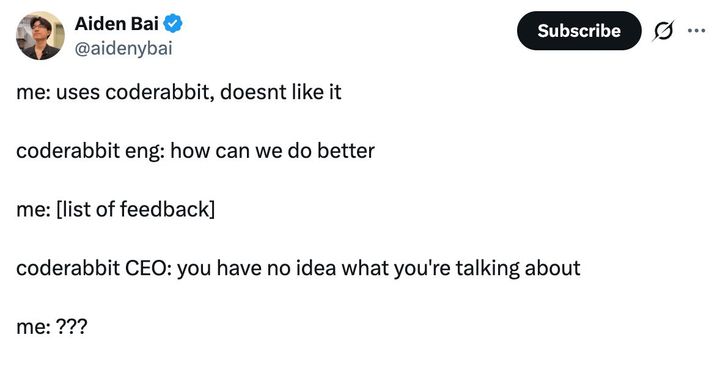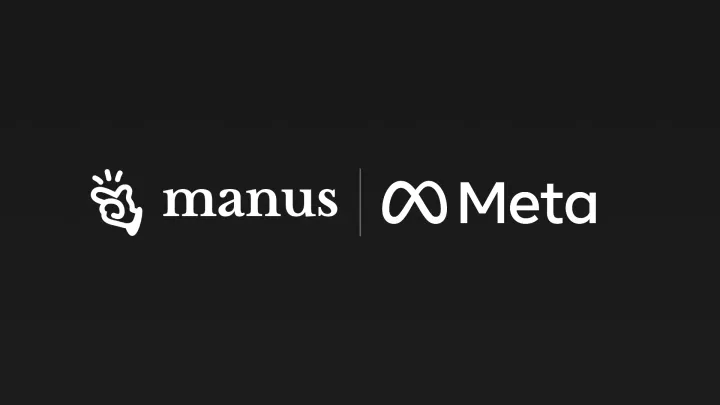Google is dead. Where do we go now?
The article discusses the decline of Google's dominance in the search engine market and explores alternative search platforms that may emerge as the next go-to options for users, highlighting the potential for decentralized and privacy-focused search engines to gain traction in the future.

Show HN: Stop Claude Code from forgetting everything
I got tired of Claude Code forgetting all my context every time I open a new session: set-up decisions, how I like my margins, decision history. etc.
We built a shared memory layer you can drop in as a Claude Code Skill. It’s basically a tiny memory DB with recall that remembers your sessions. Not magic. Not AGI. Just state.
Install in Claude Code:
/plugin marketplace add https://github.com/mutable-state-inc/ensue-skill
/plugin install ensue-memory
# restart Claude Code
What it doesn’t do: - it won’t read your mind - it’s alpha; it might break if you throw a couch at it
Repo: https://github.com/mutable-state-inc/ensue-skill
If you try it and it sucks, tell me why so I can fix it. Don't be kind, tia
Parsing Advances
The article discusses the evolution of parsing technology, highlighting the importance of incremental parsing for building responsive user interfaces. It examines the history of parsing approaches and the recent advancements in techniques like predictive parsing and continuous parsing, which aim to improve the efficiency and responsiveness of parsing in modern software development.
50,000 drums of radioactive wastes were dumped near the Farallones, 1946 to 1970
The article discusses the Farallon Islands, a group of small islands off the coast of California that are home to a diverse array of marine life and serve as an important seabird nesting site. It provides an overview of the islands' history, ecology, and conservation efforts to protect this unique ecosystem.
Flame Graphs vs Tree Maps vs Sunburst (2017)
The article compares three different visualization techniques - flamegraphs, treemaps, and sunbursts - for analyzing performance data. It discusses the strengths and weaknesses of each approach, helping readers choose the most suitable visualization method for their specific use case.
Static Allocation with Zig
The article explores the use of static allocation in Zig, a systems programming language, to implement a key-value store. It discusses the advantages of static allocation, such as improved performance and reduced memory usage, and demonstrates how to implement a simple key-value store using Zig's built-in data structures and memory management features.

When someone says they hate your product
The article discusses strategies for responding effectively to negative feedback, emphasizing the importance of active listening, perspective-taking, and a constructive approach to address concerns and turn the situation into an opportunity for growth and improvement.

List of domains censored by German ISPs

ManusAI Joins Meta
Manus, a leading hand-tracking and motion control technology company, has joined forces with Meta (formerly Facebook) to collaborate on the next generation of virtual and augmented reality experiences. The partnership aims to accelerate the development of innovative input and interaction solutions for immersive computing platforms.
A production bug that made me care about undefined behavior
The article explores a production bug caused by undefined behavior in C code, highlighting the importance of understanding and accounting for undefined behavior when writing software. It emphasizes the need for developers to be aware of potential pitfalls and to carefully consider the implications of their code, even in seemingly simple scenarios.

AI is forcing us to write good code
The article discusses how the rise of AI is pushing developers to write better, more robust code. AI systems require carefully designed and well-documented code, leading to improved coding practices and a heightened focus on software quality and maintainability.

All Delisted Steam Games
The article provides a comprehensive list of all the games that have been delisted from Steam, the popular digital distribution platform. It covers the reasons behind these delistings, which often involve licensing issues or the discontinuation of online services, and the implications for players who own these games.
Lead-Free Organic–Inorganic Halobismuthate for Large Piezoelectric Effect

Show HN: Aroma: Every TCP Proxy Is Detectable with RTT Fingerprinting
TL;DR explanation (go to https://github.com/Sakura-sx/Aroma?tab=readme-ov-file#tldr-e... if you want the formatted version)
This is done by measuring the minimum TCP RTT (client.socket.tcpi_min_rtt) seen and the smoothed TCP RTT (client.socket.tcpi_rtt). I am getting this data by using Fastly Custom VCL, they get this data from the Linux kernel (struct tcp_info -> tcpi_min_rtt and tcpi_rtt). I am using Fastly for the Demo since they have PoPs all around the world and they expose TCP socket data to me.
The score is calculated by doing tcpi_min_rtt/tcpi_rtt. It's simple but it's what worked best for this with the data Fastly gives me. Based on my testing, 1-0.7 is normal, 0.7-0.3 is normal if the connection is somewhat unstable (WiFi, mobile data, satellite...), 0.3-0.1 is low and may be a proxy, anything lower than 0.1 is flagged as TCP proxy by the current code.
Obelisk 0.32: Cancellation, WebAPI, Postgres
Obelisk, a leading cryptocurrency mining hardware and software company, has announced the release of Obelisk 0.32, a significant update to their mining platform. The update includes performance improvements, bug fixes, and new features aimed at enhancing the user experience for Obelisk miners.
Intelligence – A Mystery Investigation Game
The article discusses the Intelligence Game, a platform that allows users to learn about and participate in simulated intelligence operations. It explores the educational and entertainment value of the game, which aims to provide insights into the world of intelligence agencies and their work.
Which Humans? (2023)
The article explores the impact of social media usage on adolescent well-being, finding that high levels of social media use are associated with increased risk of depression and anxiety, particularly for girls. The study highlights the need for further research and interventions to address the mental health implications of social media use among youth.

Left Behind: Futurist Fetishists, Prepping and the Abandonment of Earth (2019)
The article examines the perspectives of 'left-behind futurist fetishists' who advocate for space colonization and technological solutions to environmental problems, arguing that this approach neglects the needs of marginalized communities and abandons efforts to improve life on Earth.

Libgodc: Write Go Programs for Sega Dreamcast
libgodc is a Go library that provides a simple and efficient way to interact with the Oracle Database Connection (ODC) library. It allows Go developers to access and manage Oracle databases directly from their Go applications.
Show HN: Superset – Terminal to run 10 parallel coding agents
Hey HN, we’re Avi, Kiet, and Satya. We’re building Superset, an open-source terminal made for managing a bunch of coding agents (Claude Code, Codex, etc) in parallel.
- Superset makes it easy to spin up git worktrees and automatically setup your environment
- Agents and terminal tabs are isolated to worktrees, preventing conflicts
- Built-in hooks [0] to notify when your coding agents are done/needs attention,
- A diff viewer to review the changes and make PRs quickly
We’re three engineers who’ve built and maintained large codebases, and kept wanting to work on as many features in parallel as possible. Git worktrees [1] have been a useful solution for this task but they’re annoying to spin up and manage. We started superset as a tool that uses the best practices we’ve discovered running parallel agents.
Here is a demo video:
https://www.youtube.com/watch?v=pHJhKFX2S-4
We all use Superset to build Superset, and it more than doubles our productivity (you’ll be able to tell from the autoupdates). We have many friends using it over their IDE of choice or replacing their terminals with Superset, and it seems to stick because they can keep using whatever CLI agent or tool they want while Superset just augments their existing set of tools.
Superset is written predominantly in Typescript and based on Electron, xterm.js, and node-pty. We chose xterm+node-pty because it's a proven way to run real PTYs in a desktop app (used by VSCode and Hyper), and Electron lets us ship fast. Next, we’re exploring features like running worktrees in cloud VMs to offload local resources, context sharing between agents, and a top-level orchestration agent for managing many worktrees or projects at once.
We’ve learned a lot building this: making a good terminal is more complex than you’d think, and terminal and git defaults aren’t universal (svn vs git, weird shell setups, complex monorepos, etc.).
Building a product for yourself is way faster and quite fun. It's early days, but we’d love you to try Superset across all your CLI tools and environments, we welcome your feedback! :)
[0] https://code.claude.com/docs/en/hooks
[1] https://git-scm.com/docs/git-worktree
GOG is getting acquired by its original co-founder
GOG, the digital game store and distribution platform, is being acquired by its original co-founder, Marcin Iwiński. The acquisition is expected to strengthen GOG's position in the gaming industry and provide more resources for the platform's continued development.
Vitest Browser Mode Guide
This article provides a guide on how to set up and use Vitest in browser mode, a lightweight and fast unit testing framework for JavaScript. It covers the necessary steps to configure Vitest for browser-based testing and explains the benefits of this approach compared to traditional browser testing tools.

Linux DAW: Help Linux musicians to quickly and easily find the tools they need
Kidnapped by Deutsche Bahn
This article recounts the author's experience of being effectively 'kidnapped' by Deutsche Bahn, Germany's national railway company, after missing their train. It details the frustrating bureaucratic process they went through to resolve the situation and highlights the lack of clear policies and communication from the company.
You can't design software you don't work on
The article discusses the importance of developers actively working on and using the software they design, arguing that it is essential for creating effective and user-friendly applications. It emphasizes the benefits of this hands-on approach, including a deeper understanding of user needs and the ability to make more informed design decisions.
Karpathy on Programming: "I've never felt this much behind"

High-performance C++ hash table using grouped SIMD metadata scanning
Static Allocation for Compilers
The article discusses the concept of static allocation in compilers, explaining how it can help optimize memory usage and performance. It explores the challenges and trade-offs involved in implementing static allocation, highlighting its potential benefits and limitations.
Nvidia takes $5B stake in Intel under September agreement
Nvidia has acquired a 5% stake in Intel under an agreement reached in September 2022, which will allow Nvidia to purchase up to $5 billion worth of Intel shares by 2025. This strategic investment highlights the growing collaboration between the two tech giants in the semiconductor industry.